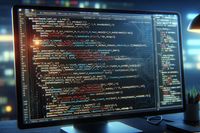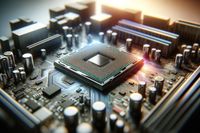Finding and Erasing Quantum Computing Errors in Real-Time
Researchers have developed a groundbreaking method to identify errors in quantum computers, greatly improving error correction efficiency.

Innovative Approach in Quantum Computing
Researchers have developed a method that can reveal the location of errors in quantum computers, making them up to ten times easier to correct. This will significantly accelerate progress towards large-scale quantum computers capable of tackling the world’s most challenging computational problems, the researchers said.
Led by Princeton University’s Jeff Thompson, the team demonstrated a way to identify when errors occur in quantum computers more easily than ever before. This is a new direction for research into quantum computing hardware, which more often seeks to simply lower the probability of an error occurring in the first place.
Advancements in Quantum Error Correction
Thompson’s lab works on a type of quantum computer based on neutral atoms. Inside the ultra-high vacuum chamber that defines the computer, qubits are stored in the spin of individual ytterbium atoms held in place by focused laser beams called optical tweezers. In this work, a team led by graduate student Shuo Ma used an array of 10 qubits to characterize the probability of errors occurring while first manipulating each qubit in isolation, and then manipulating pairs of qubits together.
The main result of the study is not only the low error rates, but also a different way to characterize them without destroying the qubits. By using a different set of energy levels within the atom to store the qubit, compared to previous work, the researchers were able to monitor the qubits during the computation to detect the occurrence of errors in real time.
Significant Outcomes and Future Implications
The researchers believe that, with the new approach, close to 98 percent of all errors should be detectable with optimized protocols. This could reduce the computational costs of implementing error correction by an order of magnitude or more.
Other groups have already started to adapt this new error detection architecture. Researchers at Amazon Web Services and a separate group at Yale have independently shown how this new paradigm can also improve systems using superconducting qubits.



